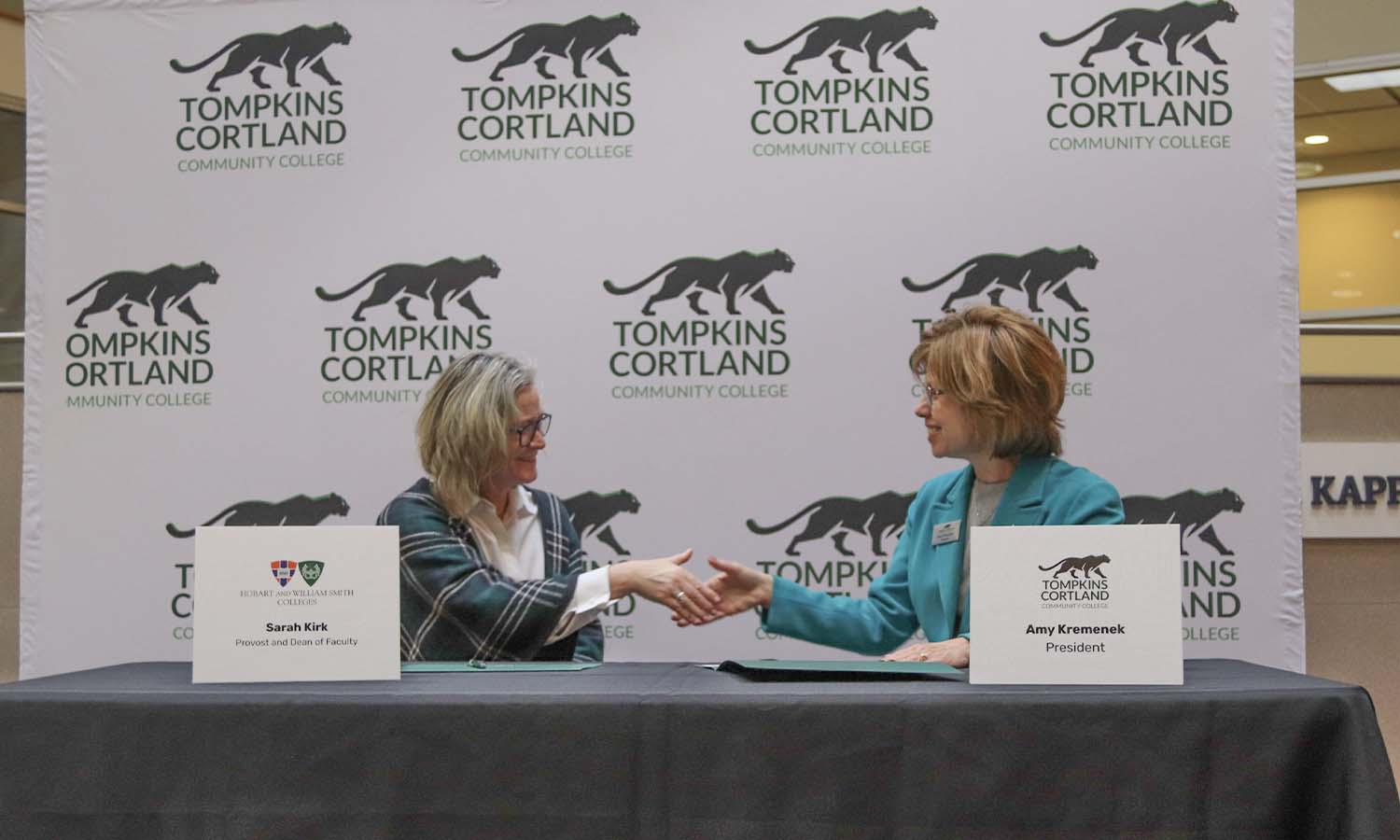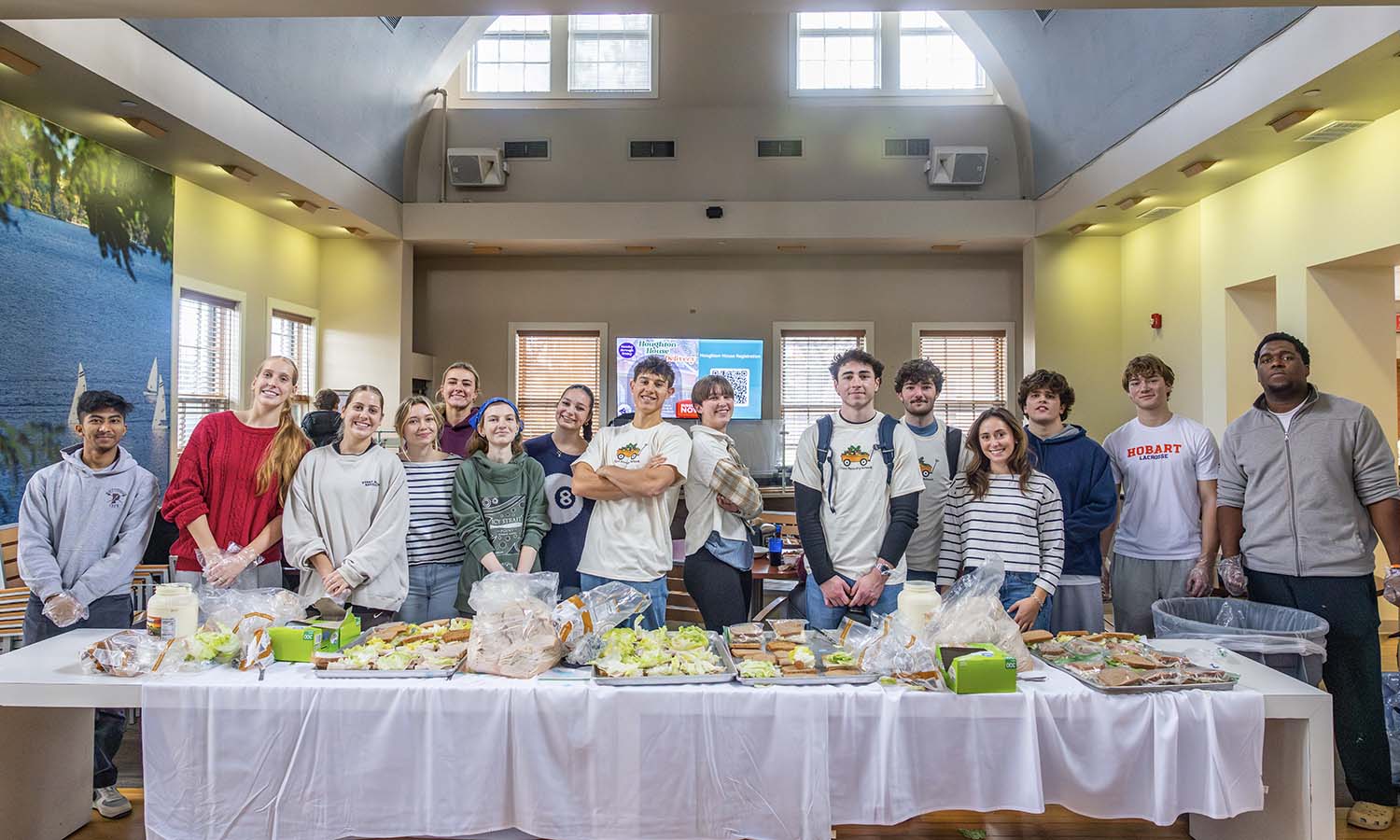
HWS News
17 December 2025 Students Take the Lead in the Fight Against Hunger
The Food Recovery Network at HWS rescues thousands of pounds of food each year for shelters and pantries across the region.
In one of the wealthiest countries in human history, tens of millions of people face hunger every day. During the record-long U.S. government shutdown, one major point of debate was whether and how the Department of Agriculture would continue to fund the Supplemental Nutrition Assistance Program, or SNAP, which 42 million Americans rely on to eat.
Well before the shutdown, this issue was top of mind for a number of Hobart and William Smith students, who have led the local chapter of the Food Recovery Network (FRN), which gets food on the plates of people in need.
FRN began in 2011 at the University of Maryland, College Park, and now includes more than 8,000 college student volunteers in 49 states. It arrived at HWS in the 2024-25 academic year, through the efforts of Abigail Cole ’25, who is pursuing a Master of Arts in Teaching at HWS, and Aiden Greiff ’25, current Peace Corps Volunteer serving in Senegal.
Assuming FRN leadership on campus this year, Nick Jones ’26 and Lorelei Lynott ’28, along with an array of volunteers, package leftover food from Saga dining hall and other food-service areas on campus – still consumable but not eligible to be sold – and then transport it to various sources in the Finger Lakes area. These places include shelters and food pantries and extend, geographically, all the way to the Samaritan Center in Syracuse.
Every day, Sodexo staff “leaves excess food on a designated cart,” Lynott says. “Volunteers come in and transfer the food to plastic containers, which are then transported to places in need.”
For instance, the Community Lunch Program in Geneva serves lunch to local people every day, including the food from HWS. “That’s a great place to see [the program] in action,” Lynott says.
Food Recovery Network
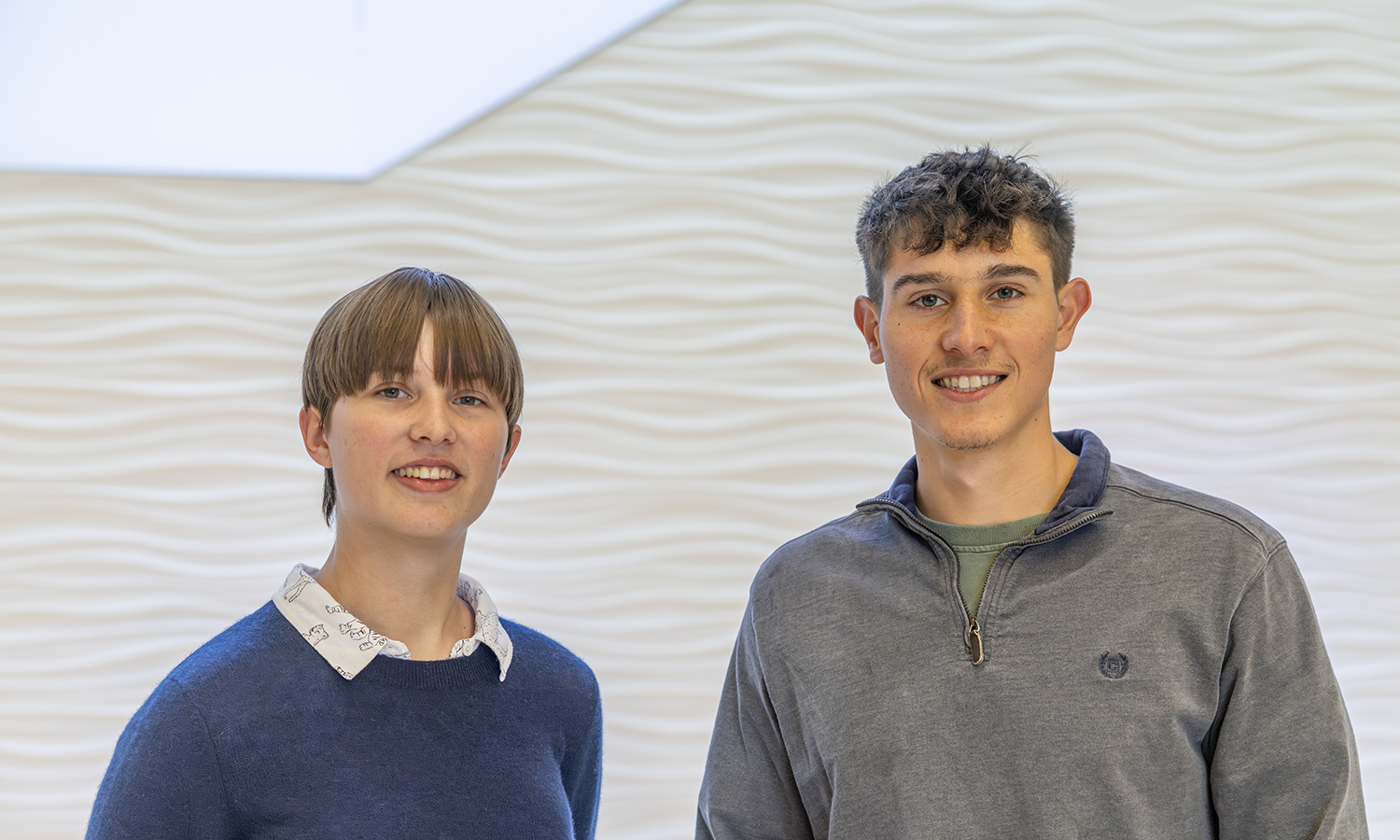
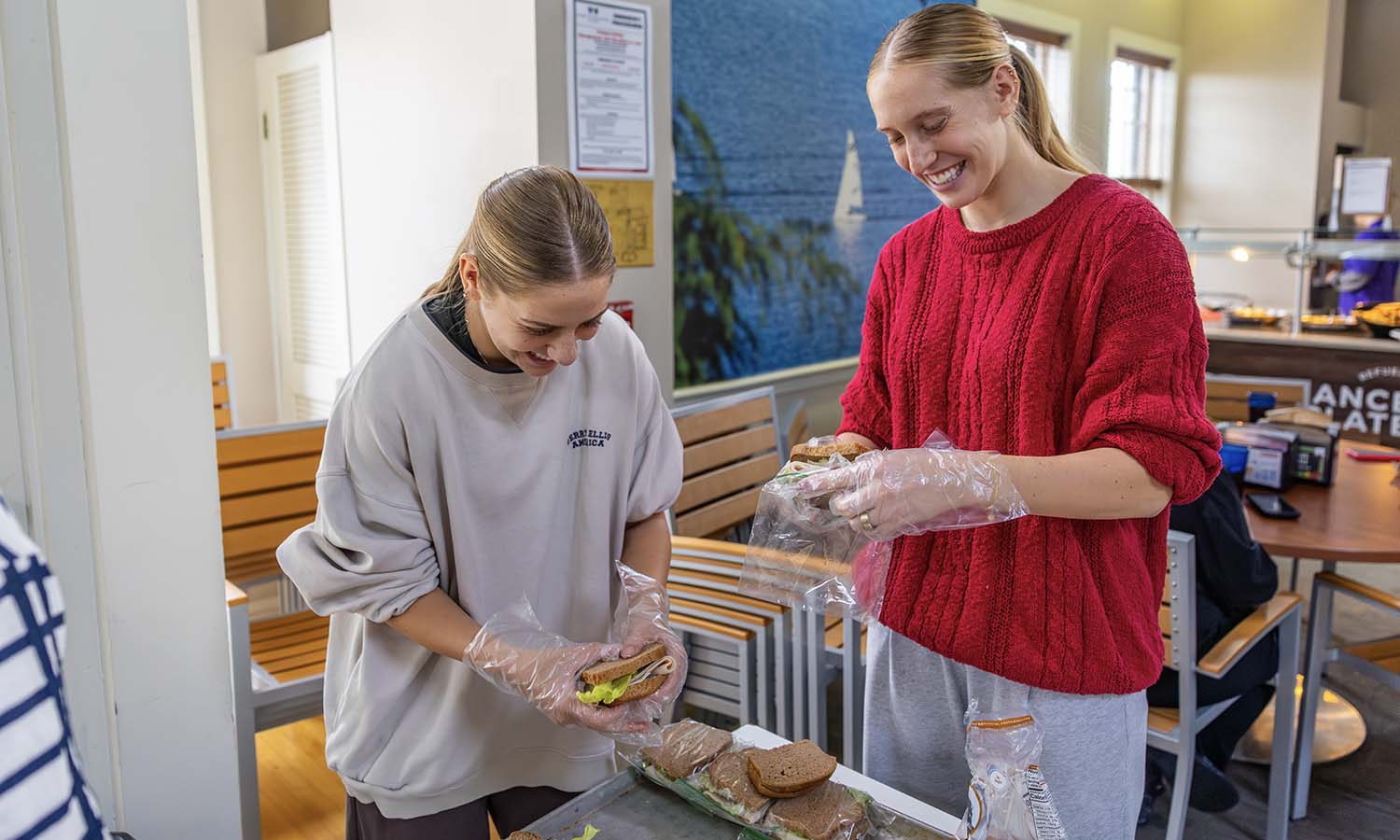
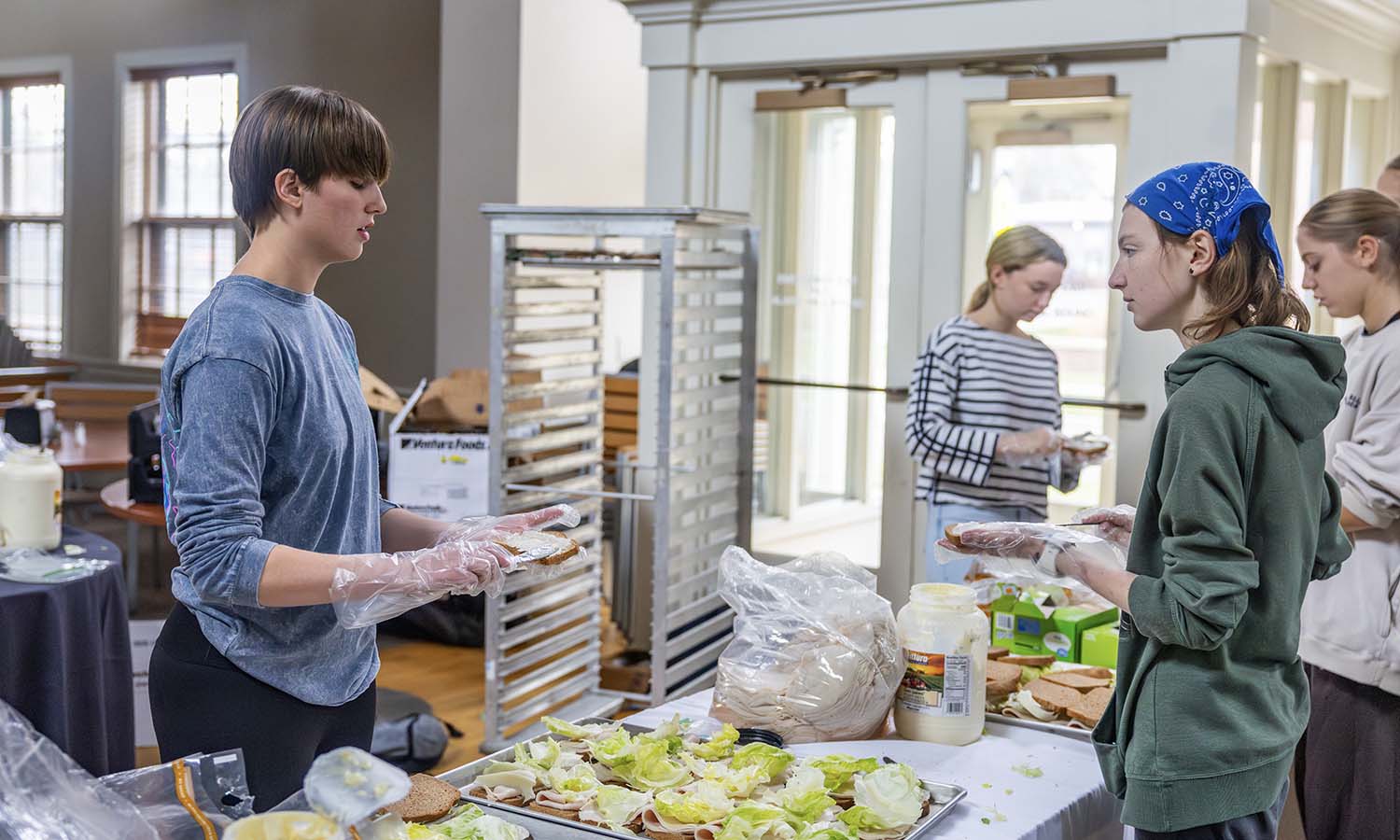

The HWS’ FRN distributed about 11,000 pounds of food during the 2024-25 academic year, Jones reports. About 9,500 pounds of that food was through recovery, with another 1,500 pounds going out in the form of student-made peanut butter and jelly sandwiches.
This semester alone, FRN achieved remarkable outcomes in its ongoing fight against food waste and hunger:
- 2,200 sandwiches made — including 1,000 peanut butter & jelly and 1,200 turkey sandwiches.
- 1 ton of apples donated to community partners.
- 5,000 pounds of food donated — equivalent to around 5,000 meals for neighbors in need.
- Approximately 200 hours of volunteer service contributed across FRN activities.
- 30 regularly engaged volunteers supporting ongoing recovery and distribution efforts.
- 10 community partners and organizations supported through food recovery and donation.
- 4 community events hosted, including 2 sandwich drives and 2 food drives (one in partnership with Student Government).
To say these efforts are making a difference would be to understate their effect.
“They’re bringing us a lot of food,” says Carolyn Cook, the founder and director of Helpful Hearts in Lyons. Cook says her organization has a thrift store, a food pantry, a free story and a heating-cooling area, all designed to serve homeless people. She says Helpful Hearts uses the HWS food donations in its free lunch program.
Building on these efforts, HWS Student Government — in collaboration with FRN, and the DEI and CCSEL offices — led a Hearty Meals in a Bag drive to address food insecurity. The program raised more than $1,100.
“It’s been very helpful,” Cook says. “We make sandwiches [on site] and get prepared food from the Wegmans deli and bakery. Hobart and William Smith has added 50 percent more to the program. That’s quite a bit, and it’s a big help. All of it’s good, and a lot of it is healthy options – tofu and vegetables. … They just gave us a call and started bringing it, and it’s been amazing.”
Joelle Harleston, the chief development officer at the Samaritan Center in Syracuse, was equally impressed with, and grateful for, the HWS students’ initiative and generosity.
Harleston says her organization received some of the PB&Js made by HWS volunteers in the Saga kitchen on campus. “We actually ran a newsletter on them,” she says. “They came each month for a period of two to four months. They filled our guests’ needs and their spirits.”
Both Jones and Lynott say that the groups and people receiving the food donations aren’t the only ones who benefit. The act of helping people, they say, is its own reward.
“Service has been important to me since I was little,” says Lynott, who hails from the northern suburbs of Chicago. “My parents were very involved in various volunteer projects.”
Jones, a native of Guilderland, N.Y., northwest of Albany, says he was inspired by his friend Greiff. “Watching Aiden’s passion for it – not just collecting food, but for fighting food insecurity – really made me want to take over these efforts,” Jones says.
Looking at it from a wider perspective, Jones says the way food is generally disposed of is a problem. “The model doesn’t make sense,” he says. “Throwing food into the compost bin in order to make more food doesn’t make sense. It’s important to get the food to the people who need it.”
Which is exactly what Jones, Lynott and their team of volunteers are working to do.


